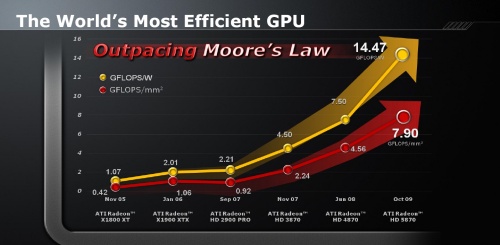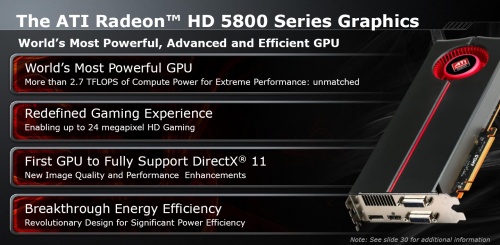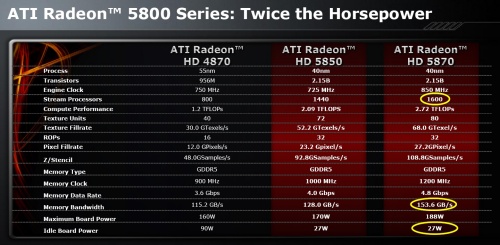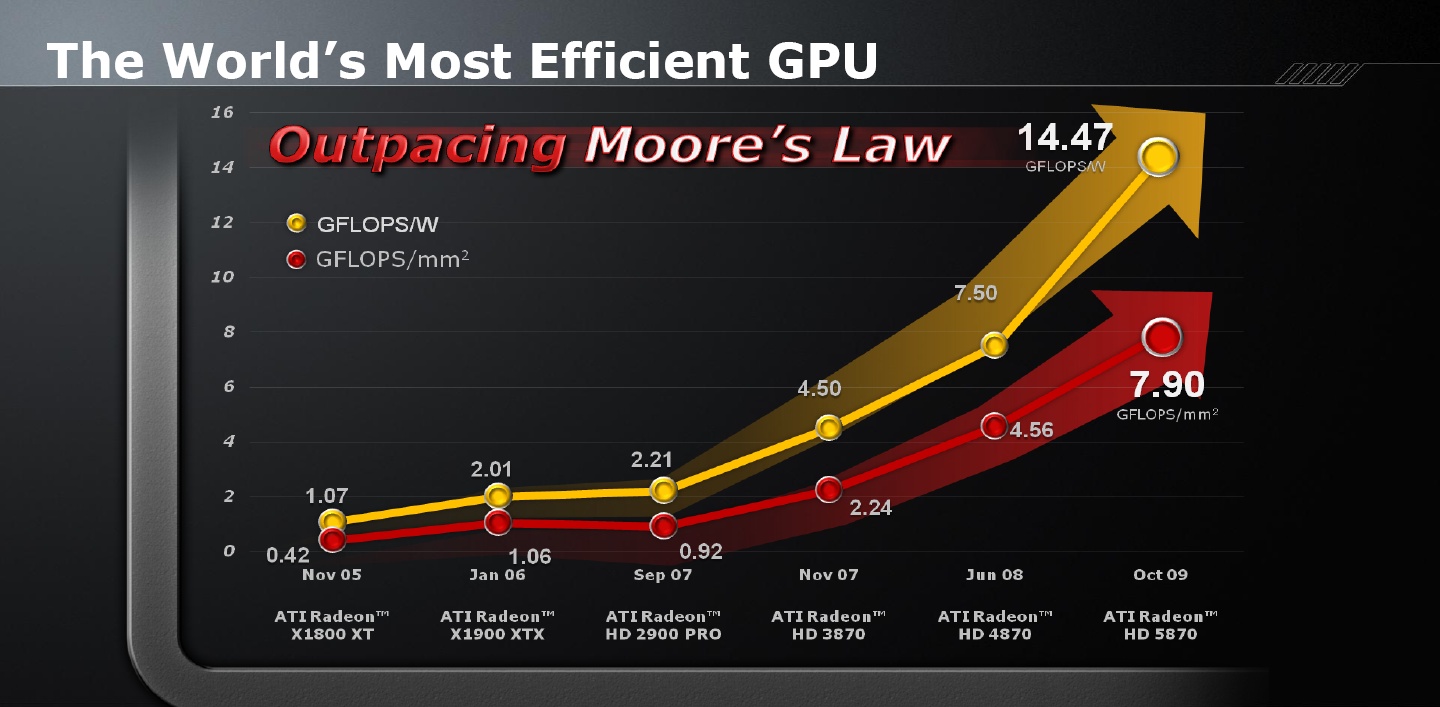Radeon HD 5870 - Features
Way back in 1965, Intel co-founder Gordon E. Moore released a paper stating that the number of transistors that can be placed economically on an integrated circuit would double approximately every two years. This was later named Moore's Law, and it accurately describes a driving force of technological and social change in the late 20th and early 21st centuries.
While the trend has continued for more than half a century and is not expected to stop until 2015 or even later, with the introduction of the Radeon HD 5870 graphics card AMD claims they are breaking Moore's Law – and rightly so. Specifically, they are going from a transistor count of roughly 956 million to a staggering 2150 million within a 15 month period between 2008 and 2009.

There have also been some notable improvements in terms of efficiency over the past few years. The Radeon X1800XT released in late 2005 provided just 1.07 GFLOPS/W, for example, while in early 2006 the X1900XTX was capable of 2.01 GFLOPS/W. Progress then seemed to stall for some time, coincidentally around the time of the AMD/ATI merger, as 18 months down the road the Radeon HD 2900 Pro reached 2.21 GFLOPS/W.
Finally a few months later the Radeon HD 3870 was released featuring a die shrink which improved efficiency to 4.50 GFLOPS/W. Then along came the Radeon HD 4870 providing 7.50 GFLOPS/W, and now we have the Radeon HD 5870 with an efficiency rating of 14.47 GFLOPS/W.

Behind this massive leap is the 40nm design of the new "Cypress XT" GPU, which also allowed for a very complex configuration. Putting things into perspective, while the Radeon HD 4870 featured 800 SPUs along with 40 TAUs (Texture Address Units) and 16 ROPs (Rasterization Operator Units), the new and improved 5870 boasts double everything – 1600 SPUs, 80 TAUs and 32 ROPs. This has bumped compute power from 1.2 TFLOPs to an insane 2.72 TFLOPs out of a single GPU.

The core clock speed has also been increased from 750MHz to 850MHz compared to the Radeon HD 4870, instead matching the 4890 variant. The Radeon HD 5870 still utilizes GDDR5 memory, which is now clocked at 1200MHz, allowing for a memory bandwidth of 153.6GB/s, or a whopping 33% more than the 4870.
